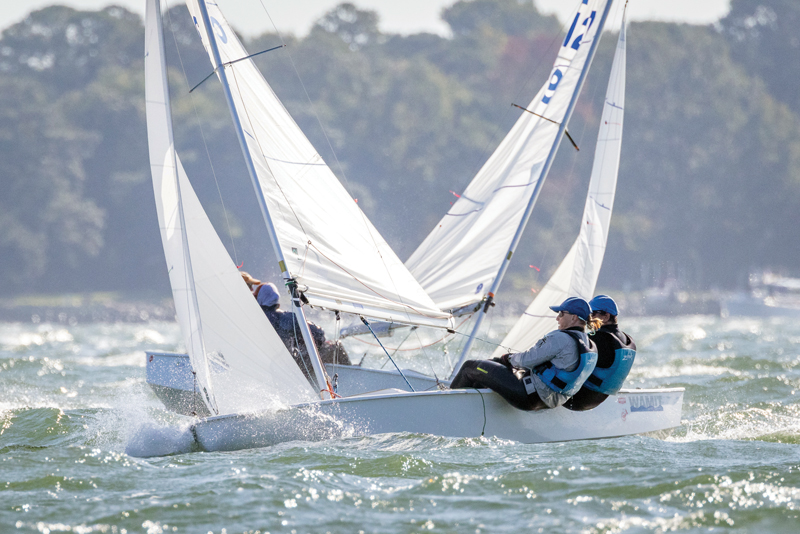When communication was limited, a game plan helped ensure a common understanding of what had to be done on the racecourse.
Breakfast the morning of the final day of Snipe North Americans in October was uncharacteristically quiet. My skipper had lost her voice.
“Hah, that’s from her yelling at you so much yesterday in the big breeze, right?” our fellow sailors joked around the table. Actually, I think it’s because she laughed so loudly at too many of my jokes, because I am nothing if not hilarious on the boat.

But what was amusing over cereal was not as funny on the water. It was a windy day—a chilly 18-22 knots as we prepared for our first start of the day. Trying to hear a faint whisper from the back of the boat was going to be challenging.
So, I said (me being the only person on the two-person boat who could actually say anything at that point), “It’s always important to have a game plan for the race, at least for the first beat, but it’s especially important here. We need to have a common understanding of what we think we need to do to succeed on the first beat, so we can hop on it without having to talk about it.”
Skipper nodded yes.
I talked us through some of the key features of the racecourse and forecast, and we agreed on a few important points:
Tide was just past low tide, so any current running wouldn’t be as strong as we had seen for much of the weekend. But we still wanted to be aware that there might be current running down the course from the weather mark—and also some from left to right looking upwind.
In our pre-race tuneups, looking at the course setup, it appeared that there would be more time spent on starboard tack than on port to reach the weather mark.
The weather forecast called for the breeze to go further right and to increase, but exactly when that would happen was unclear.
Our analysis was that, ideally, we’d be toward the boat end of the starting line, with a hole that would allow us to stay on starboard tack for a good while.
But that didn’t happen. A suboptimal start left us about a half boatlength behind the pack off the line, immediately eating dirty air. That wasn’t a recipe for success. I looked over my left shoulder and said, “There’s only one boat we’d have to duck just a bit. We’re clear behind everyone else on our hip; let’s get out of here and use that right side,” I said.
Out of the corner of my eye I saw her head nod, and the tiller went over. We tacked, went behind the handful of boats on our hip, and tacked back to starboard after we saw we had a clean lane going back.
Things kept getting better. Not only did we have clean air, but we had clean air on starboard tack on the right side of the course… and the wind was indeed shifting right (and building—a challenge for our way-lighter-than-other-teams team). About halfway up the beat, we had clawed back about half the fleet. Progress continued. As we approached the weather mark, I made another obvious statement so my quiet skipper wouldn’t have to vocalize it: “The wind keeps going right, and they don’t have a change mark in; we’ll likely want to gybe set.”
Having our game plan/course awareness dialed in, we were indeed the first boat to gybe and capitalized on our decision: We were the first boat to round the leeward mark.
The rest of the race wasn’t a bouquet of roses for us—we lost one boat on the next upwind leg and one more on a ridiculously windy “reach” (that was so far downwind the top boats set our whisker poles). But if we hadn’t realized we needed to “talk through” our game plan so that we could communicate using only a few quiet words and nods, we may not have been as quick to pick up that right shift trend that enabled us to go from virtually last to first in one lap of the racecourse.
Happily, my skipper’s voice came back later that day—it just needed a few hours off. Our practice of determining a game plan is one all teams should use, whether they can vocalize it or not!
by Kim Couranz
About the Author: SpinSheet Small Boat columnist for more than a decade, Kim Couranz has earned several national and world titles in Laser Radials (ILCA 6) and Snipes. She has also raced J/22s, J/24s, and Ynglings on an international level.




